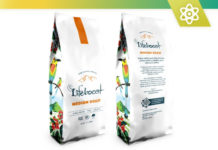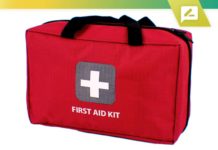Creating a personalized fitness plan can seem like a daunting task, but it’s essential for achieving optimal health and wellness. A well-structured fitness plan not only helps you meet specific physical goals but also enhances your overall quality of life. This article will delve into the critical components of a fitness plan, including setting realistic objectives, incorporating various workout types, focusing on diet, and maintaining mental and emotional well-being. By the end, you'll have a clear guide to crafting a fitness plan that suits your lifestyle and goals.
Setting Realistic Goals
The first step in formulating an effective fitness plan is setting realistic and achievable goals. Whether you aim to lose weight, gain muscle, or improve cardiovascular health, your goals should be Specific, Measurable, Achievable, Relevant, and Time-bound (SMART). For instance, instead of saying “I want to lose weight,” specify “I want to lose 10 pounds in three months.” This specificity helps in tracking progress and staying motivated.
Additionally, breaking down larger goals into smaller, manageable milestones can provide a sense of accomplishment and keep you motivated. For example, if your ultimate goal is to run a marathon, you can start by aiming to complete a 5K, then a 10K, and so on. This not only makes the overall goal less intimidating but also helps in building up stamina gradually.
Incorporating a 360-Degree Fitness Regime
To achieve comprehensive fitness, it’s crucial to focus on various elements like muscular strength, endurance, flexibility, and cardiovascular health. A balanced approach ensures that no single aspect of your fitness is neglected, reducing the risk of injury and improving overall health.
Strength Training
Strength training is essential for building muscle mass, increasing metabolism, and enhancing bone density. Exercises like weight lifting, push-ups, and resistance band workouts can be incorporated into your routine. Aim for at least two strength training sessions per week, focusing on different muscle groups to give them ample time to recover.
Cardiovascular Exercises
Cardiovascular exercises are crucial for improving heart health and stamina. Activities like running, swimming, cycling, and aerobics can significantly boost your cardiovascular endurance. For optimal benefits, include at least 150 minutes of moderate-intensity or 75 minutes of high-intensity cardio exercises per week.
Flexibility and Balance
Flexibility and balance exercises are often overlooked but are vital for preventing injuries and improving mobility. Yoga and Pilates are excellent for enhancing flexibility and balance. Incorporate these exercises into your routine at least twice a week to maintain a full range of motion and promote muscle relaxation.
Mental and Emotional Well-being
Physical fitness is closely linked to mental and emotional health. Incorporating practices like meditation, mindfulness, and stress management techniques can significantly improve your overall well-being. Setting aside time for mental health can reduce stress, enhance focus, and improve your mood, making it easier to stick to your fitness plan.
Focusing on Your Diet
Diet plays a pivotal role in any fitness plan. Consuming unhealthy food can negate the effects of your workouts and impede progress. A personalized diet plan tailored to your lifestyle, fitness goals, and health conditions is crucial. Here are some essential dietary considerations:
Balanced Nutrition
A balanced diet rich in essential nutrients, vitamins, and minerals is vital for fitness and overall health. Include a variety of fruits, vegetables, lean proteins, whole grains, and healthy fats in your diet. Avoid processed foods, sugary snacks, and excessive caffeine, as they can hamper your progress.
Personalized Vitamins and Supplements
Many fitness enthusiasts opt for personalized vitamins and supplements to ensure they meet their daily nutrient requirements. Consult a nutritionist to determine which supplements are suitable for you. Remember, supplements are not a substitute for a balanced diet but can help bridge nutritional gaps.
Hydration
Staying hydrated is crucial for optimal performance and recovery. Aim to drink at least 8-10 glasses of water per day, more if you're engaging in intense physical activities. Proper hydration helps maintain energy levels, supports muscle function, and aids in digestion.
Avoid Crash Diets
Crash diets might offer quick results, but they are often unsustainable and can cause harmful side effects. Instead of resorting to drastic measures, focus on making gradual, healthy changes to your diet. This approach ensures long-term success and better health.
Determining FITT for Every Activity
The FITT principle (Frequency, Intensity, Time, and Type) is a guideline for creating a balanced workout plan. It varies based on your ultimate goal, whether it's general fitness, muscle building, or sports-specific training.
Frequency
Frequency refers to how often you exercise. For general fitness, aim for at least three to five workout sessions per week. If you're training for a specific sport, the frequency might vary depending on the demands of the sport and your role in the team.
Intensity
Intensity refers to how hard you work during each session. It can be measured using heart rate, perceived exertion, or the amount of weight lifted. Balance high-intensity workouts with lower-intensity activities to avoid burnout and reduce the risk of injury.
Time
Time refers to the duration of each exercise session. A typical session might last between 30 to 60 minutes, depending on your fitness level and goals. Ensure that you dedicate enough time to warm-up and cool-down exercises to prevent injuries.
Type
Type refers to the kind of exercise you do. Include a variety of exercises in your plan to target different muscle groups and prevent monotony. For example, mix cardio workouts like running and swimming with strength training and flexibility exercises.
Using Technology to Enhance Your Fitness Plan
Modern technology offers numerous tools that can help you stay on track with your fitness goals. Devices like fitness trackers, smartwatches, and mobile apps can provide valuable insights into your progress and keep you motivated.
Fitness Trackers and Smartwatches
Fitness trackers and smartwatches, like the Apple Watch, can monitor your heart rate, track workouts, and even remind you to move if you’ve been sedentary for too long. These devices can be synced with fitness apps to provide a comprehensive overview of your activity levels and progress. Learn more about how to stay fit with Apple Watch.
Mobile Apps
Mobile apps like Strongr Fastr’s AI-powered workout builder can generate personalized workout plans tailored to your goals, preferences, and available equipment. By adjusting your workouts based on your performance, these apps ensure that you continue to progress safely and effectively. Check out the workout builder for more details.
Online Resources
Numerous online resources offer valuable information and tools to support your fitness journey. Websites like SkillsYouNeed provide comprehensive guides on creating personalized fitness plans, focusing on different aspects of fitness and well-being. For more tips and insights, visit SkillsYouNeed.
Staying Consistent and Motivated
Consistency is key to achieving long-term fitness goals. Here are some tips to stay consistent and motivated:
Track Your Progress
Keeping a fitness journal or using an app to log your workouts can help you track your progress. Seeing how far you’ve come can be incredibly motivating and encourage you to keep pushing forward.
Mix Up Your Routine
Doing the same exercises repeatedly can lead to boredom and plateaus. Mix up your routine by trying new workouts, joining fitness classes, or participating in sports. This variety keeps your workouts interesting and challenges your body in new ways.
Find a Workout Buddy
Having a workout buddy can provide accountability and motivation. You’re less likely to skip a workout if you know someone is counting on you to show up. Plus, working out with a friend can make exercise more enjoyable.
Reward Yourself
Set up a reward system for achieving your fitness milestones. Whether it’s a new workout outfit, a massage, or a day off, having something to look forward to can keep you motivated.
Be Kind to Yourself
Remember, no one is perfect. There will be days when you miss a workout or indulge in unhealthy foods. Don’t be too hard on yourself. Acknowledge the slip-up and get back on track the next day. Consistency over time, rather than perfection, leads to lasting results.
Conclusion
Creating a comprehensive fitness plan is a multifaceted process that requires careful consideration of various elements, from goal setting and workout routines to diet and mental well-being. By setting realistic goals, incorporating a variety of exercises, focusing on balanced nutrition, and utilizing technology, you can create a fitness plan that supports your overall health and well-being. Stay consistent, mix up your routine, and be kind to yourself throughout your fitness journey. With dedication and the right approach, you can achieve optimal health and enjoy a higher quality of life.
For more information on creating a personalized fitness plan, visit the SkillsYouNeed blog and explore the AI workout builder from Strongr Fastr. These resources can provide additional tips and tools to help you succeed in your fitness journey.













![Bowflex Max Total: 2024 Fitness Workout Exercise Machine [Review] Bowflex Max Total: 2020 Equipment Review For Complete Upper and Lower Body Workout](https://www.advancedliving.com/wp-content/uploads/2019/12/Bowflex-Max-Total-218x150.jpg)


